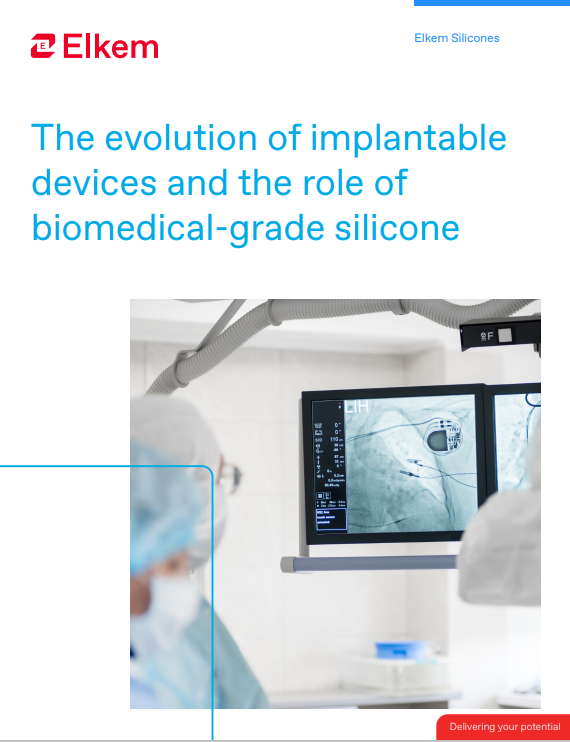
Like all medical devices, implantables are governed by strict regulations to ensure patient safety and manufacturer compliance. Under the US Food and Drug Administration classification system, implantables fall into the Class II or Class III categories and follow several regulations based on the length of time the device will be implanted (less than or more than 29 days).
Innovation through regulation
While strong regulations can pose challenges in terms of time and costs associated with obtaining approvals for implantable devices, they can also play a crucial role in fostering innovation. The key lies in finding a balance that allows for rapid technological advancements while maintaining rigorous safety standards. Regulations also emphasise the importance of collecting real-world data, which can help manufacturers refine existing products and develop new ones.
Recent regulatory changes in Europe have prompted significant innovations in implantable devices. For instance, the EU MDR now allows certain high-risk devices to be exempt from mandatory clinical investigations if the device is a modification of an already marketed device, which can accelerate the time to market for innovations based on existing technologies.
Current evolving regulations also encompass software that functions as a medical device (SaMD). Under the new MDR and in-vitro diagnostics device regulation, digital health applications are classified as medical devices if they are intended for medical purposes such as diagnosis or treatment. This regulatory change has spurred innovation in implantable devices that integrate software for enhanced functionality, monitoring and patient management.
And in the UK, the Innovative Devices Access Pathway (IDAP) supports the development of technologies that meet specific clinical needs. This government-backed programme aims to facilitate the regulatory process for innovative devices, encouraging the development of new implantable technologies that can be rapidly brought to market.
Finally, with the increasing integration of AI in healthcare, the US Government has introduced comprehensive rules surrounding AI in the US, which are expected to influence the design and functionality of many implantable devices.
How regulations impact material supply: A case study in medical-grade silicone
With new regulatory frameworks supporting continued innovation in implantable devices, the need for future-proof biocompatible materials is rising. Medical-grade silicones are employed in many implantable medical devices due to their biocompatible and chemical inertness. With widespread use in pacemakers, cochlear implants and stents to name a few, medical grade silicones are ideal for miniaturisation and can even be used in drug delivery applications for chronic conditions.
With over 60 years of real-world testing, medical-grade silicone is now seen as a ‘gold standard’ for biocompatibility in many implantable devices. Further, silicone materials have been proven safe for human health through numerous scientific studies and risk evaluations by regulatory agenciesi.
Elkem Silicones produces implantable-grade silicone rubber, high-purity silicone gels, adhesives and dispersions under the Silbione™ Biomedical brand. Michael Goglia, Elkem’s Americas Healthcare Market Manager, explains that while implantable devices are subject to several regulations based on the region of product filing, the intended use, device description and amount of time the device will be implanted, ISO standards are key when it comes to material manufacturing.
“Elkem’s Silbione products are designed to meet testing within the ISO 10993-1 recommendation,” says Goglia “For Elkem’s Silbione™ Biomedical products, additional testing (ISO 10993/USP Class VI standards for 12-week implants) ensure these are suitable for more than 29 days of exposure.”
These include tests for acute systemic toxicity and cytotoxicity, haemolysis, intracutaneous reactivity, mutagenicity, pyrogenicity, skin sensitisation and tissue irritation.
“However, it is the manufacturer’s responsibility to ensure suitability for the intended use of their product,” notes Goglia.
There are some notable differences in the regulations from one region to another but most regions follow general testing principles based on ISO standards, even if they refer to the standard under another name. “The recommended work required is similar across the globe. Depending on the device, there may be different requirements if clinical trials are necessary,” says Goglia.
Elkem supports its customers with the regulatory filing for a new device by submitting master files for many of its products used in long term implantables. This enables the FDA to review the proprietary information within the product file such as test results and manufacturing methods as well as access the end manufacturer’s profile submission without compromising confidentiality. For the customer, this means reduced testing requirements and a smoother filing process. In cases where Elkem does not have a master file in place, Goglia says they work closely with the end manufacturer’s regulatory team to assist in making sure regulatory questions involving silicone materials are addressed.
New EU Medical Device Regulations (MDR) – (Regulations (EU) 2017/745 and (EU) 2017/746, updated 2024) – has not impacted customers when it comes to medical device implants, says Goglia:
“This is because Elkem and our customers have already done their due diligence to evaluate uses of our materials and have great confidence in the safety profile of our product. However, as product stewards, there will always be cases where the industry will review certain chemicals for their use and applications and make determinations on whether to restrict or minimise use across all industries and products.”
Elkem also serves in many capacities on the Global Silicones Council (Chair) as well as the Silicones Environmental Health and Safety Center (SEHSC), Technical Committee Chair and Study Design Workgroup Chair.
For more details on the role of silicone in the evolution and next generation of implantable medical devices, download the free paper below.



